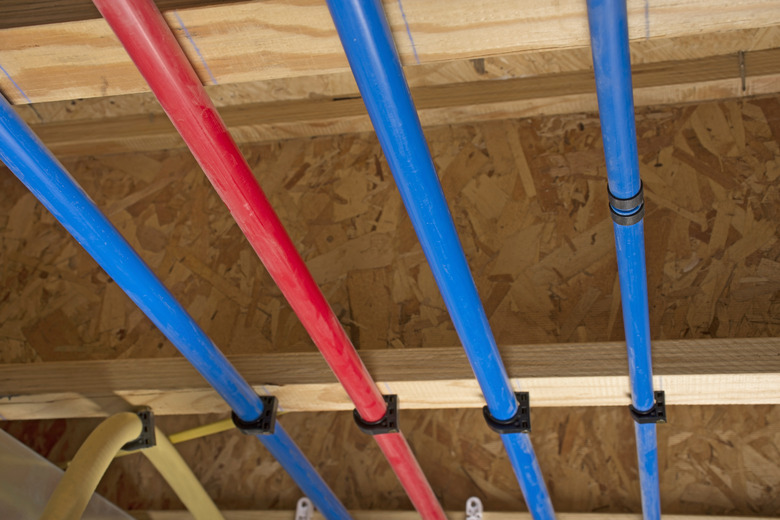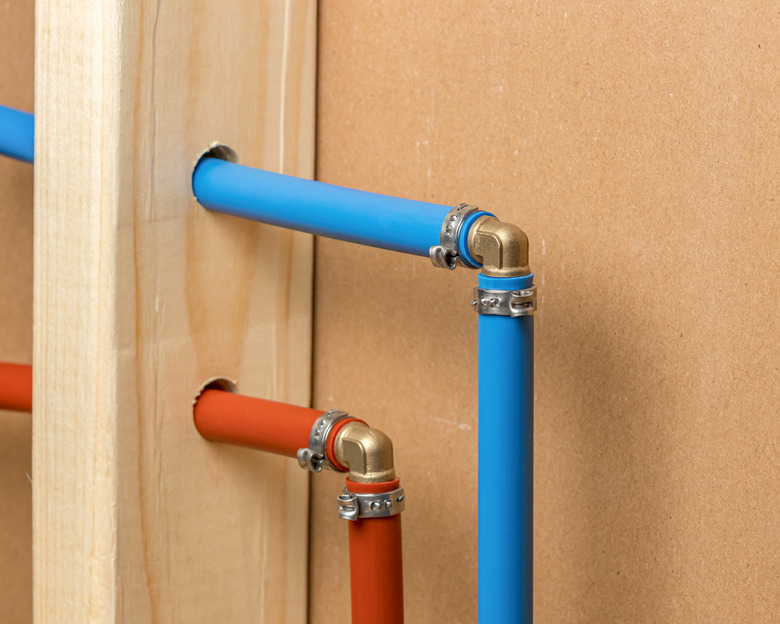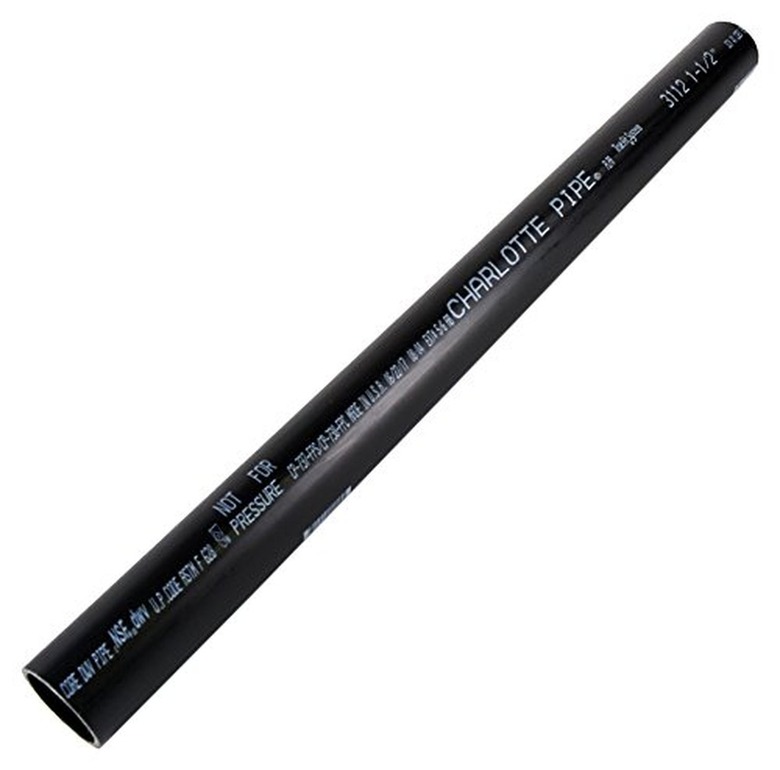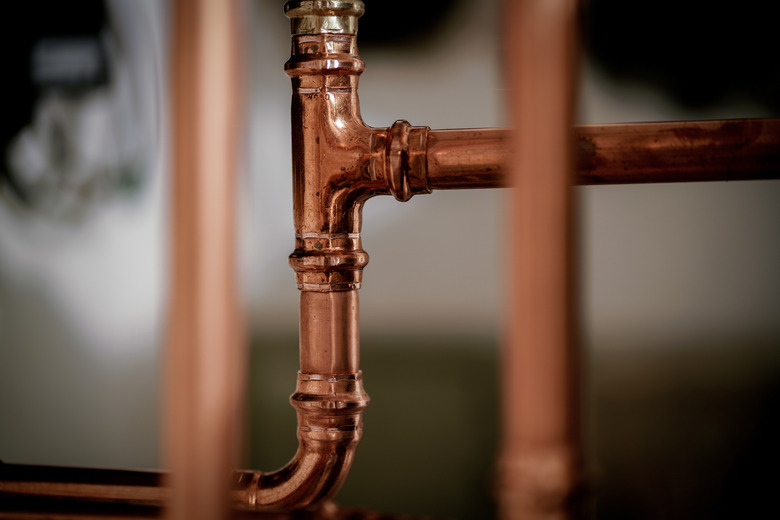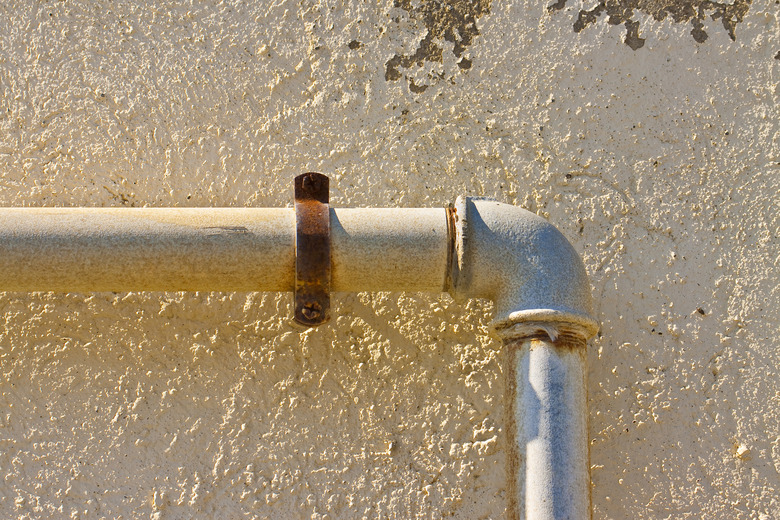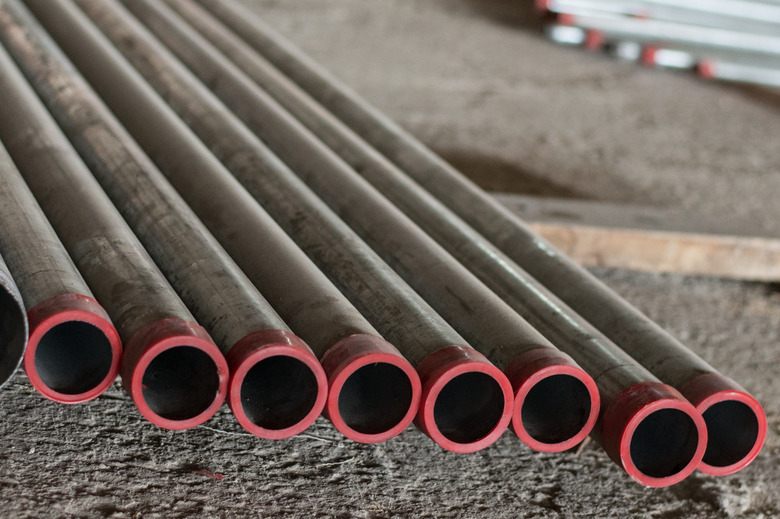A Homeowner's DIY Guide To Plumbing Materials
We may receive a commission on purchases made from links.
If you're going to tackle a plumbing job on your own, it's important to understand that it's not always as simple as just gluing together some PVC pipe and praying it doesn't leak. There are many different types of piping as well as an almost limitless list of fixtures and valves from which to choose. Each one serves a specific purpose, and a pipe that works well for one plumbing application may not work at all for another. It's a good idea to learn a bit about plumbing materials before you find yourself scratching your head in the plumbing aisle of your local home improvement store.
PVC Plumbing Pipes
PVC Plumbing Pipes
Short for polyvinyl chloride, PVC has become the plumbing material of choice when it's feasible to use it. These plastic pipes are lightweight and very easy to work with. PVC pipes get joined together with a special glue, which makes them easy to install without leaks even if you don't have a lot of plumbing experience. They last an incredibly long time, aren't subject to corrosion, and can handle high water pressure.
They can't handle hot water, however. PVC is not heat-resistant, and you should never use it for pipes that have to carry hot water. PVC doesn't function well outdoors either. It's an excellent choice, however, for drain and vent pipes. It's easy on the budget as well, generally being the cheapest available pipe material.
PVC pipes are very similar to CPVC (chlorinated polyvinyl chloride) pipes. CPVC is essentially the same as PVC, but the chlorination process makes CPVC more resistant to heat. Unlike PVC, CPVC can carry water as hot as 200 degrees Fahrenheit.
PEX Plumbing Pipes
PEX Plumbing Pipes
PEX, technically known as cross-linked polyethylene, is a type of durable plastic tubing. Like PVC, PEX is lightweight and easy to work with. PEX, however, is flexible, which allows it to go where PVC can't. If, for example, you have to run water lines through a wall, PEX can be fished like a wire. PVC will require you to access the inside of the wall directly or find another route. PEX's flexibility also makes it less cumbersome to work with in crawl spaces and other tight areas.
PEX is designed for indoor use only, but it can resist cooler temperatures. Thanks to its flexibility, PEX offers a little wiggle room and can stretch a bit if water freezes in the pipe. PEX is much less likely to burst or leak if frozen pipes become an issue.
But don't let PEX's small stature trick you into thinking it's weak. PEX lasts just as long as PVC and can handle high water pressure as well. PEX can also carry hot water and is color-coded so you can easily identify hot and cold water piping. Although it can wind its way just about anywhere, PEX is easy to cut and connects easily to other pieces of PEX using barbed fittings and crimp rings.
ABS Plumbing Pipes
ABS Plumbing Pipes
Acrylonitrile butadiene styrene (ABS) pipes look like black PVC pipes. You should never use ABS pipes where they will be exposed to sunlight, but they do resist cold weather well enough for outdoor use. Typically, plumbers use ABS pipes for vents and drain lines.
Like PVC, ABS is long-lasting and easy to work with. ABS is noisier, though, and you're more likely to hear water running through the pipe. This disturbs some homeowners and can sometimes prove to be a nuisance.
Copper Plumbing Pipes
Copper Plumbing Pipes
Lasting upward of 50 years, copper plumbing has been a staple for decades. It's available in three grades, and the one you choose will depend on the task at hand. Type M copper is the thinnest used in plumbing and works best for water supply lines. Type L is of a medium thickness and typically serves places where hot water is needed, such as at your water heater. Type K is the thickest copper piping, and plumbers use it in underground lines.
Copper piping will withstand water pressure, hot water, and cold water. You can recycle it when you're finished using it, and it possesses natural anti-bacterial properties that can improve the quality of your drinking water. Unfortunately, the many benefits of copper don't come cheap. Copper is currently the most expensive plumbing material available — so much so that people have been known to break into empty houses and steal copper plumbing to sell for scrap. Expect to pay about $20 to $30 per 10 feet of pipe.
Note too that copper may come with professional installation costs. You can install copper pipe yourself, but doing so requires using a blow torch to melt solder into any joints and connections you make. You'll also need a pipe cutter, and because flexible copper is usually reserved for small water lines, you will need to make a lot of soldered connections depending on how your pipes run.
Copper also creates an environmental catch 22. You can recycle it when your pipes have passed their prime, which is a good thing, but sometimes, the mining practices used to extract copper aren't very environmentally friendly. As such, copper is not generally considered to be a green product.
Galvanized Steel Plumbing Pipes
Galvanized Steel Plumbing Pipes
Although it's no longer one of the standard plumbing pipes used in new construction, you're very likely to see these silver, zinc-coated metal pipes in your home if it was built prior to the 1980s. During its heyday, galvanized steel was an excellent option frequently used to replace other pipes that contained lead. Galvanized steel was used for water supply and drain lines but is also appropriate for sewer lines.
Galvanized steel resists corrosion and reliably lasts for about 20 to 30 years (although many homes built in the 1950s and '60s still have it). Unfortunately, it is prone to rust toward the end of its useful life, and this can cause clogs and other plumbing problems. Galvanized pipe is also very heavy and can add lead to your drinking water. While it's true that the pipes themselves contain no lead, the zinc coatings applied to them might. As this coating wears, it can increase lead levels in your water.
For most plumbing repairs, homeowners now choose to replace damaged galvanized steel with PEX. Steel pipes and fittings are still available if you want them, but the flexibility and safety of PEX make it a smart choice for making plumbing repairs. Don't make the mistake of repairing galvanized steel with copper and other dissimilar metals, however. Doing so speeds corrosion. If you need to join these two metals, place a dielectric union between them. These are special fittings made of noncorrosive metal that have rubber or plastic washers or sleeves to keep the two metals from making direct contact with each other.
Cast Iron Plumbing Pipes
Cast Iron Plumbing Pipes
Cast iron plumbing pipes aren't at all in vogue today, but you may have a house full of them if your home was built before the 1970s. Cast iron plumbing could carry both hot and cold water, performed well in areas of high water pressure, and was very popular for drainage and sewer lines. Although heavy and difficult to work with, it sometimes lasted 100 years or more and was the plumbing pipe of choice for many years. You'll recognize cast iron pipes by their black color and the fact that they have a bulge at each end where the pipes connect to each other.
Unfortunately, as you may have recently discovered, cast iron pipes make a mess when they fail. They're prone to rust, and as such, they can fail anywhere along the plumbing system, including inside your walls. Because they were such popular sewer pipes, rusted, broken, and clogged pipes can lead to problems that smell quite bad and are downright unsanitary. Repairing cast iron failures can be expensive, and homeowners' insurance sometimes balks at covering any damage.
Replacing all of the cast iron plumbing in your house at one time is likely not a realistic option. As you experience issues and failures with your cast iron system, however, be aware that you can join together cast iron and PVC with readily available fittings. Doing so will allow you to slowly eliminate worn-out cast iron pipes over time.
Pipe Fittings and Valves
Pipe Fittings and Valves
In the plumbing world, pipe fittings and valves are just as important as the pipes themselves. Fittings are used to join sections of pipe together, sometimes creating junctions that allow water to flow in more than one direction. Valves control the flow of water, allowing you to turn the water on and off as needed.
Like the pipes themselves, fittings are made from a wide variety of materials, usually the same materials from which pipes are made. This includes PVC, ABS, cast iron, and galvanized steel. Fittings made from these materials have the same characteristics as the pipes made from them. Whenever possible, the fitting you use should match your pipe material.
Valves, on the other hand, are often made from brass. Brass is durable and doesn't rust. Brass is also compatible with almost every plumbing material, so you won't have to worry about joining together metals that corrode each other.
References
- Mr. Rooter Plumbing: The Pros and Cons of Different Types of Plumbing Pipes
- New England Institute of Technology: The 5 Types of Plumbing Pipes
- ABC Blog: Galvanized Plumbing: What Is It, and Why Should I Care?
- Whitt Inspections: Cast Iron Plumbing – The Advantages and Disadvantages
- Boyd Metals: Everything You Need to Know About: PVF
- PVC Fittings Online: Benefits of Using Brass Fittings
- BoshartU: Strengths and Weaknesses of Nylon, Poly and PVC
